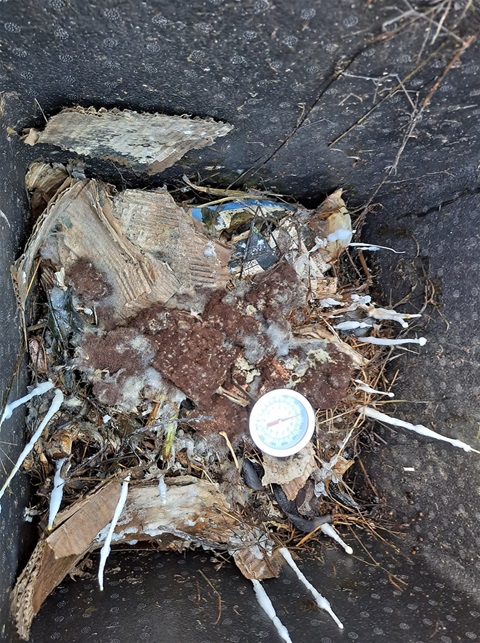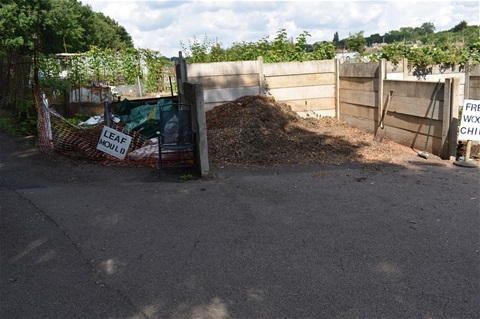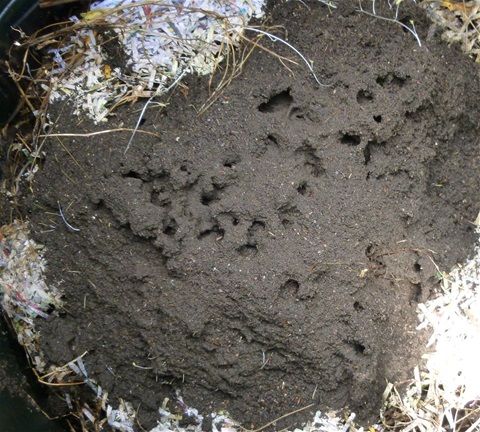The use of composted wood chip and sawdust as a bulking agent in food composters is quite common and wood chip may be used as a source of carbon in conventional compost bins as well as being composted after use as chicken or pet bedding.
Fresh
wood chip produced by landscape gardeners from woodland maintenance and tree surgery may also be available to allotment societies to make paths and any surplus could be used as mulch or to make compost.
However, concerns are often raised
by gardeners as to whether woodchip or wood-based compost is safe to use because of the risk of nitrogen depletion
It is true that wood chip consists mainly of carbon compounds (Browns) and the lignin and cellulose may take considerable time
to be broken down by the composting fungi and bacteria. Wood chip only contains a small proportion of nitrogen and if fresh wood chip were added directly to the soil, the composting microbes would take up nitrogen from the soil depriving growing plants
of soil nitrogen resulting in the risk of nitrogen deficiency.
However, the answer is simple do not add fresh wood chip, compost it first. It can then be used as soil improver or mulch. It is reported in some sources that nitrogen depletion is less
significant where the wood chip is used as surface mulch.
If the wood from which the wood chip was made included the leaves, it will contain more nitrogen but should still be composted before use.
Large quantities of wood chip can be arranged
in windrows up to 2m wide and up to 1.5m high; this size allows air to percolate through the heap, the top of the windrow cupped to help retain water. The wood chip is moistened by adding 30litres of water per cubic meter of woodchip to give a moisture content
of 50-70
Alternatively a dedicated compost bin minimum size of 1.2 metres high and two metres wid. can be used . Adding woodchip in about 6”deep layers with each layer being saturated with water
as the bin is filled The bins can be covered with a tarpaulin or thick plastic to keep in the moisture. I have found that the material is best left for a year before use, but others have produced usable compost in a matter of months.
The rate at which the chip decomposes can be increased significantly by the addition of a nitrogen source. If large quantities of wood chip are being composted this could be by the addition of Ammonium Nitrate, Ammonium sulphate or Sodium nitrate
when building the windrows rather than adding “Greens” which we would recommend if home composting or using conventional bins on an allotment.
If using windrows or a hot system with turning, the temperature should be monitored) and
the pile turned when the temperature falls below 50-55°C. Turning may be necessary at about two weekly intervals and should continue until turning does not result in an increase in temperature. Once the active stage is completed, it has been suggested
that the immature compost is left for between 3 and 12 months to mature. However, to be on the safe side it might be better to leave it for one to two years and
One of the advantages of wood chips is that in smaller quantities it will compost
aerobically on their own without the need for turning or aerating, providing the moisture level kept at a sufficient level throughout the pile. More information is available at http://www.carryoncomposting.com/142941454


